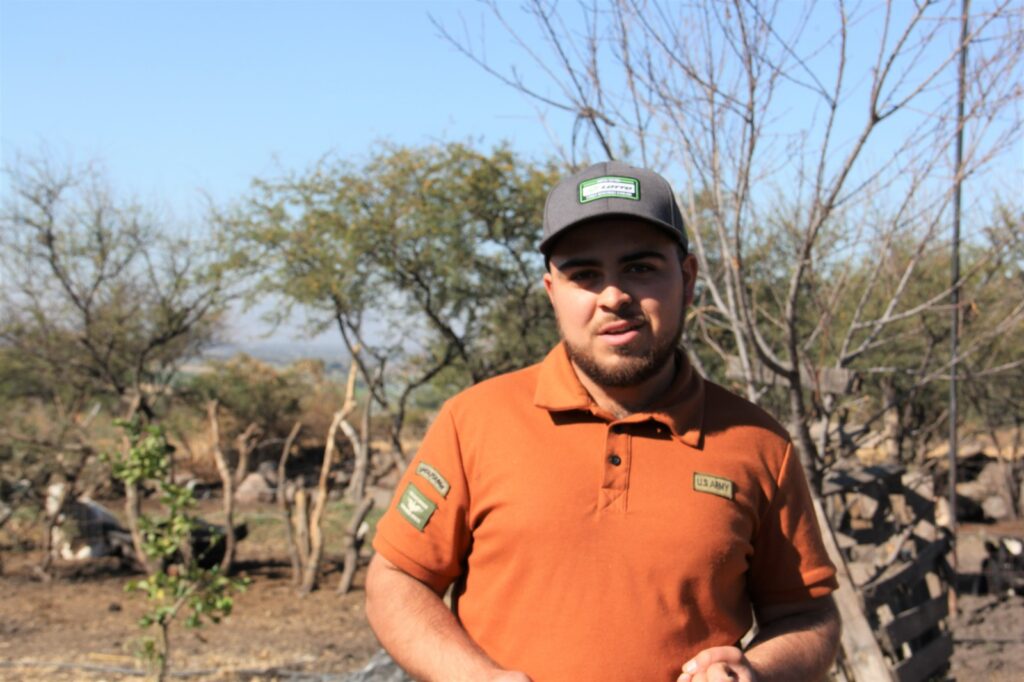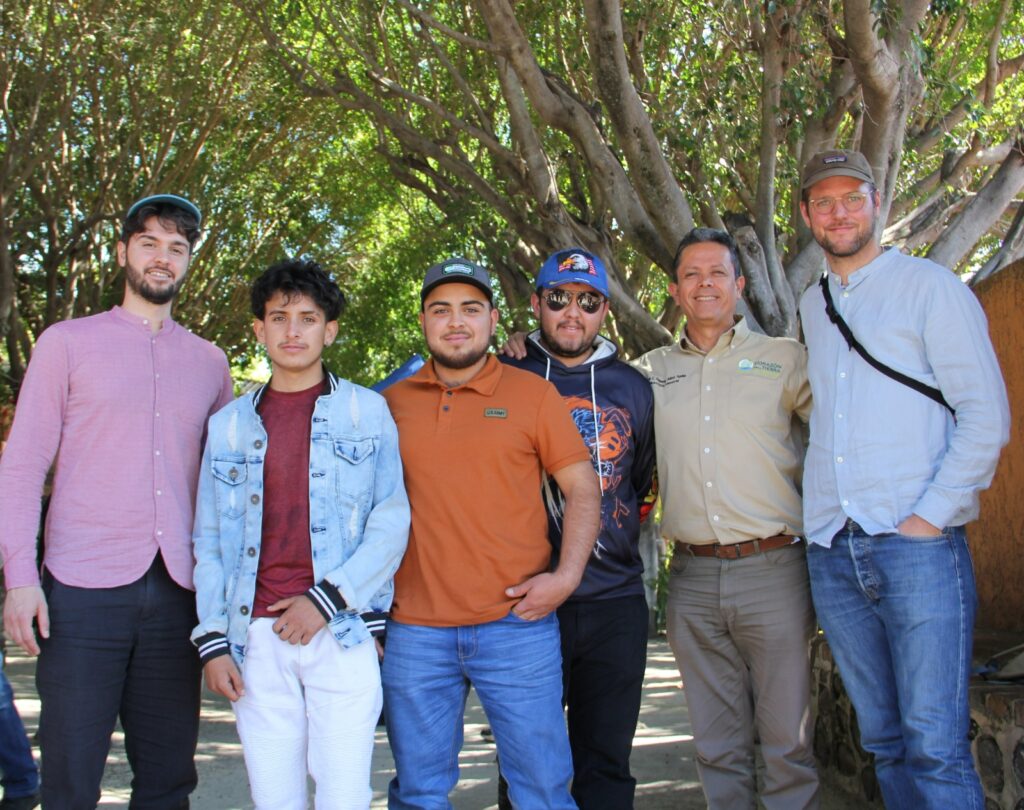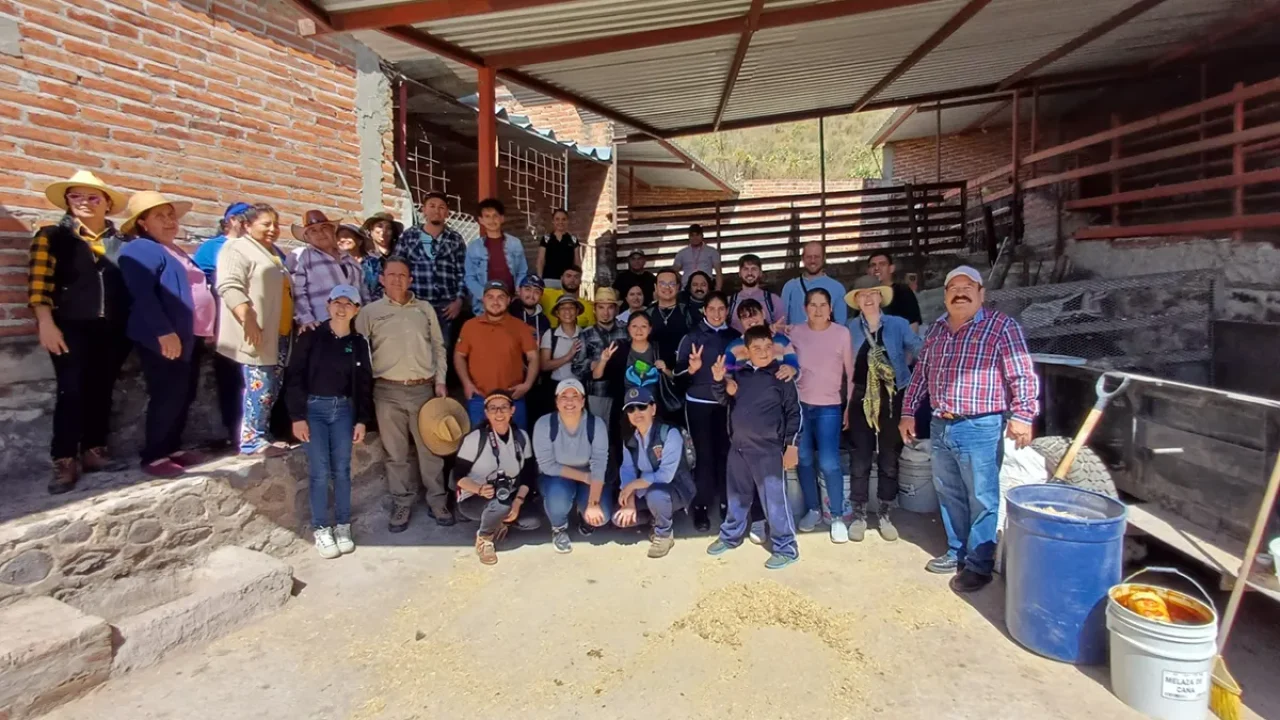Lake Chapala, located in western Mexico, is the country’s largest freshwater lake and a lifeline for millions. It supplies water to the metropolitan area of Guadalajara—Mexico’s second-largest city—and is home to a rich variety of biodiversity and traditional rural livelihoods. But this critical ecosystem is under threat. Decades of pollution from untreated sewage and agricultural runoff, combined with deforestation and unsustainable water use, have severely compromised the lake’s health.
One of the most persistent problems comes from chemical fertilizers and pesticides used in conventional farming. These substances, washed into the lake by rain, degrade water quality, threaten aquatic life, and accelerate the degradation of soils and nearby forests. In response, the Living Lakes Biodiversity and Climate Project (LLBCP), coordinated globally by the Global Nature Fund, is working with local organizations to implement nature-based solutions that restore ecosystems, strengthen rural resilience, and tackle the twin crises of biodiversity loss and climate change.
Among the most promising efforts is a quiet but powerful movement growing in the hillsides of Chapala, led by young people like César Octavio Nápoles Santiago.

Young, Rooted, and Ready to Transform the Land
César is 22 years old and lives in the community of Los Canales, in the municipality of La Barca, Jalisco. Since the age of 12, he has been dedicated to agriculture and livestock alongside his family—raising goats and cows, and growing maize. For many in his region, conventional farming methods had long been accepted as the norm, even if they came with rising costs and mounting environmental damage.
That began to change when the Instituto Corazón de la Tierra—LLBCP’s local partner in Mexico—arrived in the area. Through workshops, technical support, and field demonstrations, the institute introduced local farmers to concepts like agroecology, biofertilizer production, and regenerative livestock management.
For César, the shift was immediate and profound. He joined a Farmer Field School (Escuela de Campo de Agricultores, or ECA) formed by young producers who now co-develop and apply sustainable practices on their own lands.
“We used to spend up to 20,000 pesos per hectare on chemical fertilizers. Now we produce our own with natural ingredients and spend half as much. And we see the difference in the health of our soil and animals,” says César.
He and his fellow producers now prepare organic solutions like biol, vacuna, and súper magro—natural fertilizers and stimulants rich in nutrients that improve soil health and crop productivity without contaminating water sources.
Livestock and Land Working in Harmony
César also raises cattle and goats, and he’s applying what he’s learned to animal nutrition and land restoration. During droughts, feed is scarce and expensive. To face this, he and his family have developed nutritional supplements for their livestock using accessible and low-cost ingredients, such as native plants and locally sourced biomass.
Another key innovation is rotational grazing, a practice where animals are moved between different pasture sections. This gives vegetation time to recover and reduces soil compaction—preserving the long-term productivity of the land.
“Before, we used to let animals roam freely. But they’d trample the pasture, and nothing would grow back. Now, with rotational grazing, we’ve doubled the time our forage lasts,” César explains.
The group has also started reforesting with native species like guaje, mesquite and huizache—trees that provide both shade and forage while improving soil structure and biodiversity. They’ve even adopted living fences: rows of trees and shrubs that serve as natural boundaries, windbreaks, and food sources for livestock.

A Community Inspired by Action
At first, César and his peers faced resistance from older generations. “People used to say, ‘that’s not going to work, it’s a waste of time,’” he recalls. But over time, visible results, healthier fields, lower costs, stronger animals – spoke louder than words.
Today, farmers from neighboring areas are asking for advice and replicating their methods. What started as a group of seven has grown into a broader movement. Even César’s younger siblings and teenagers from the area are joining the workshops and learning how to regenerate the land.
“We want to show that there’s a different way of doing things. One that doesn’t compromise our future,” César says.
Restoring the Lake, One Field at a Time
Efforts like these are central to the LLBCP’s goals in the Lake Chapala basin. Through a combination of ecosystem restoration, community empowerment, and sustainable production, the project aims to address the root causes of degradation while strengthening rural livelihoods.
The initiative also places special emphasis on youth involvement, training the next generation of environmental stewards through leadership programs and hands-on learning. As a participant and local role model, César is part of a growing network of young producers who are not just adapting to climate and environmental challenges, they are actively reshaping their communities’ relationship with the land.
In a region historically dependent on natural resources, this shift holds enormous potential.
“If we take care of the land, we’re taking care of the lake. And if we take care of the lake, we’re taking care of all of us,” César says.

A Model for Climate and Biodiversity Action
César’s story is more than a local success, it’s a living example of how regenerative agriculture, led by engaged and informed youth, can generate climate solutions, protect biodiversity, and preserve vital ecosystems like Lake Chapala.
Backed by the LLBCP, this approach is now spreading across ten countries, creating blueprints for sustainable development that are rooted in local knowledge and ecological restoration.
As the global climate crisis accelerates, these bottom-up, community-driven actions offer powerful proof that real change is not only possible, it’s already happening.

